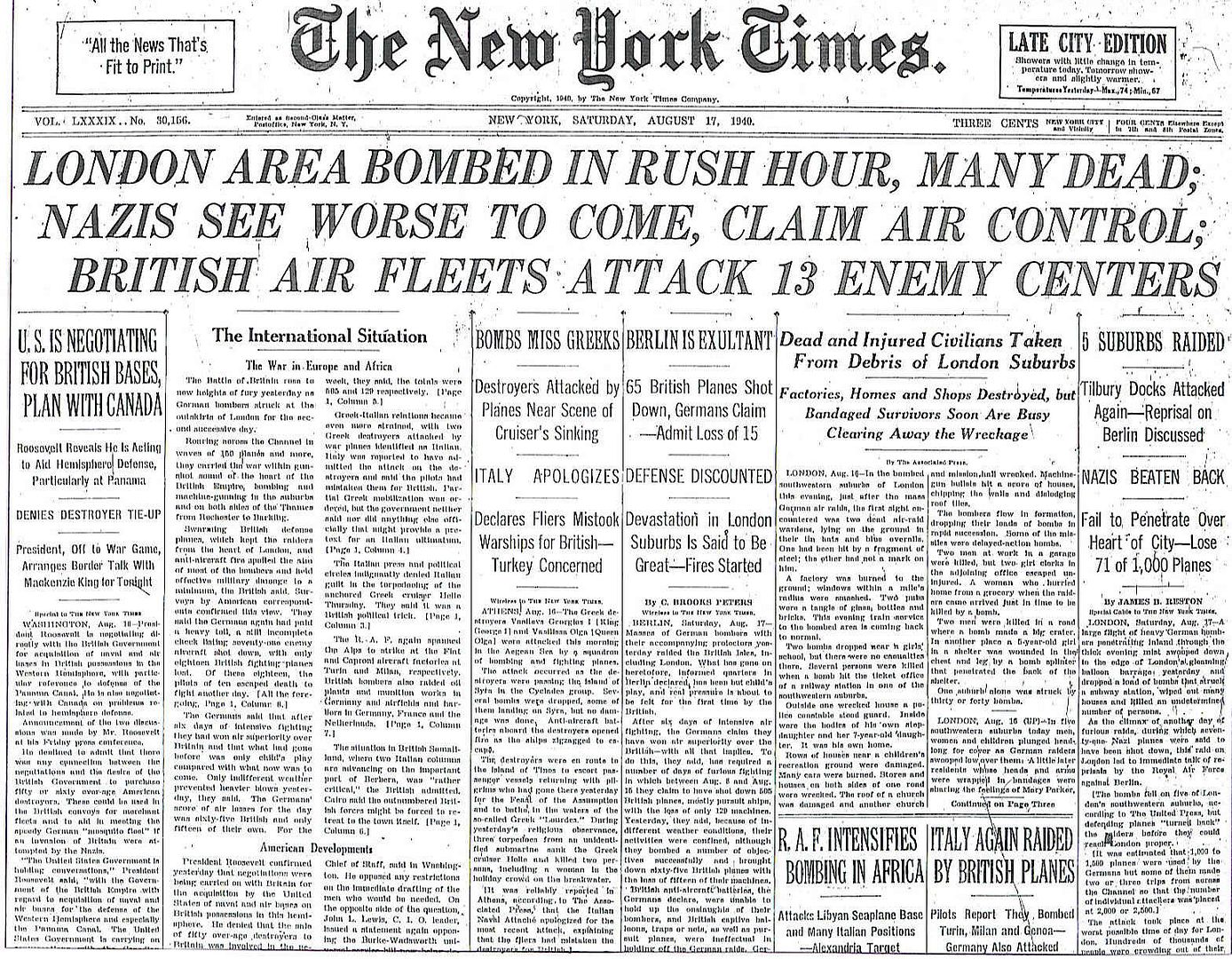
Posted on 08/17/2010 4:56:11 AM PDT by Homer_J_Simpson

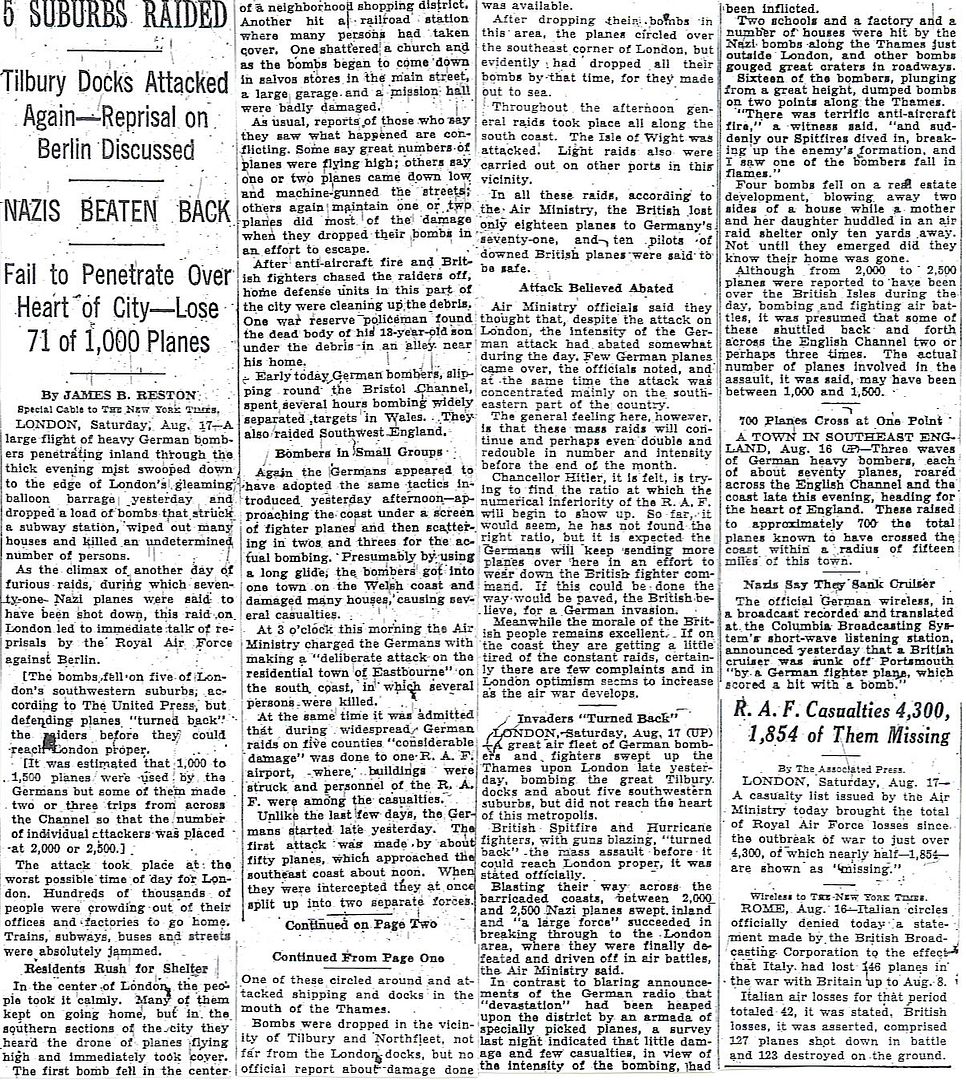
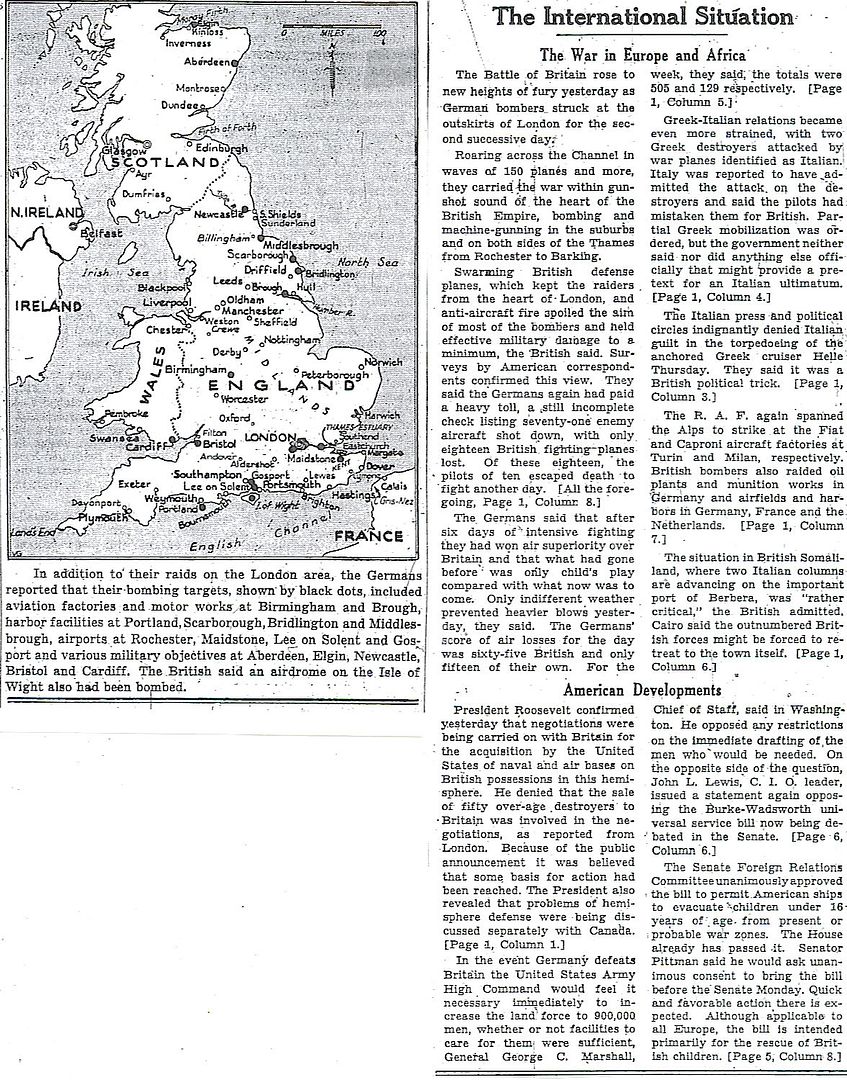
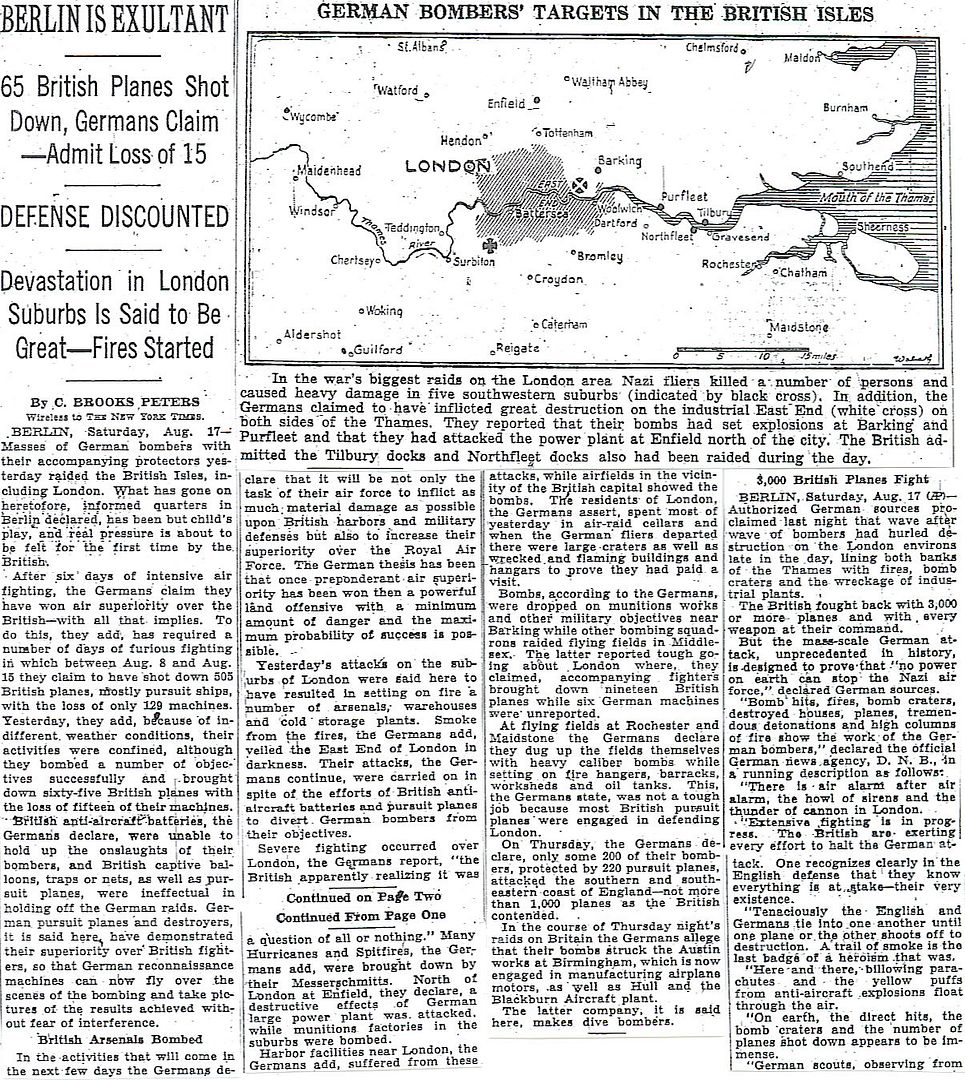
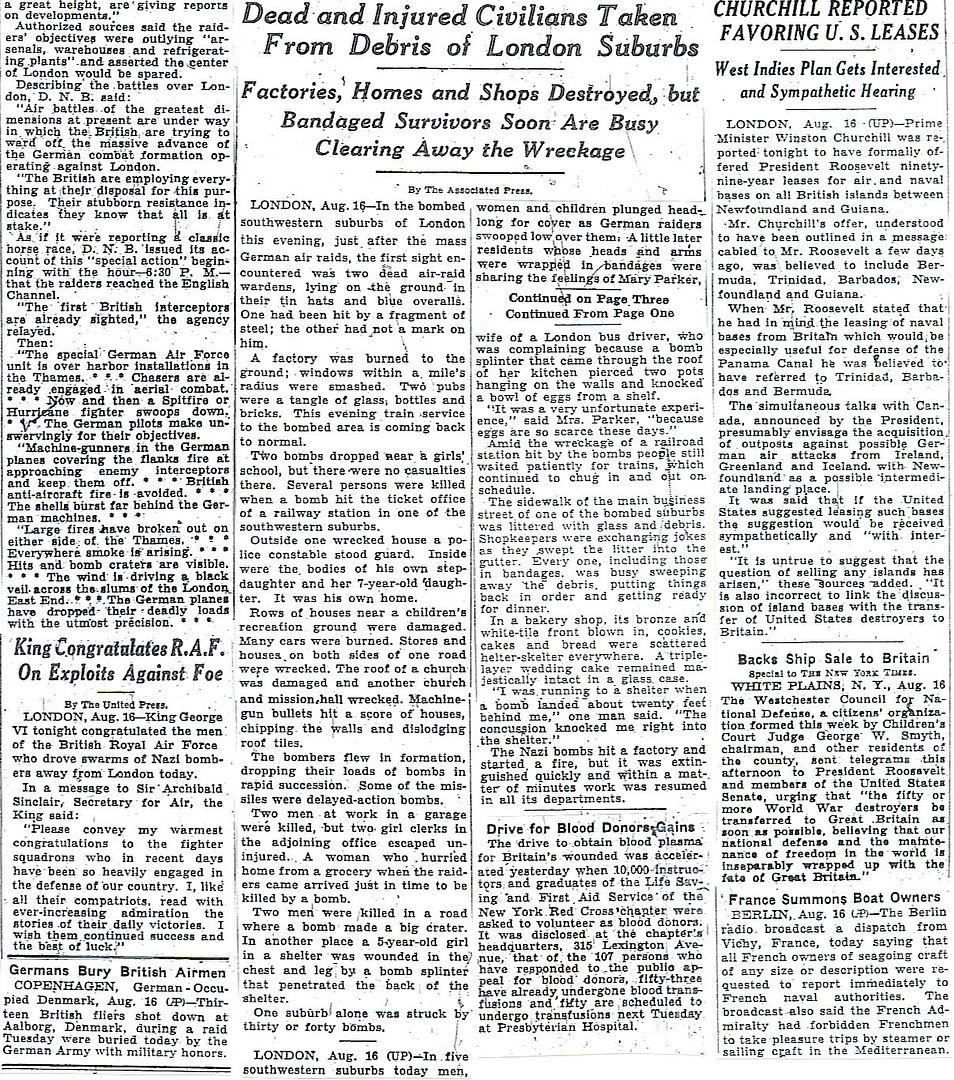
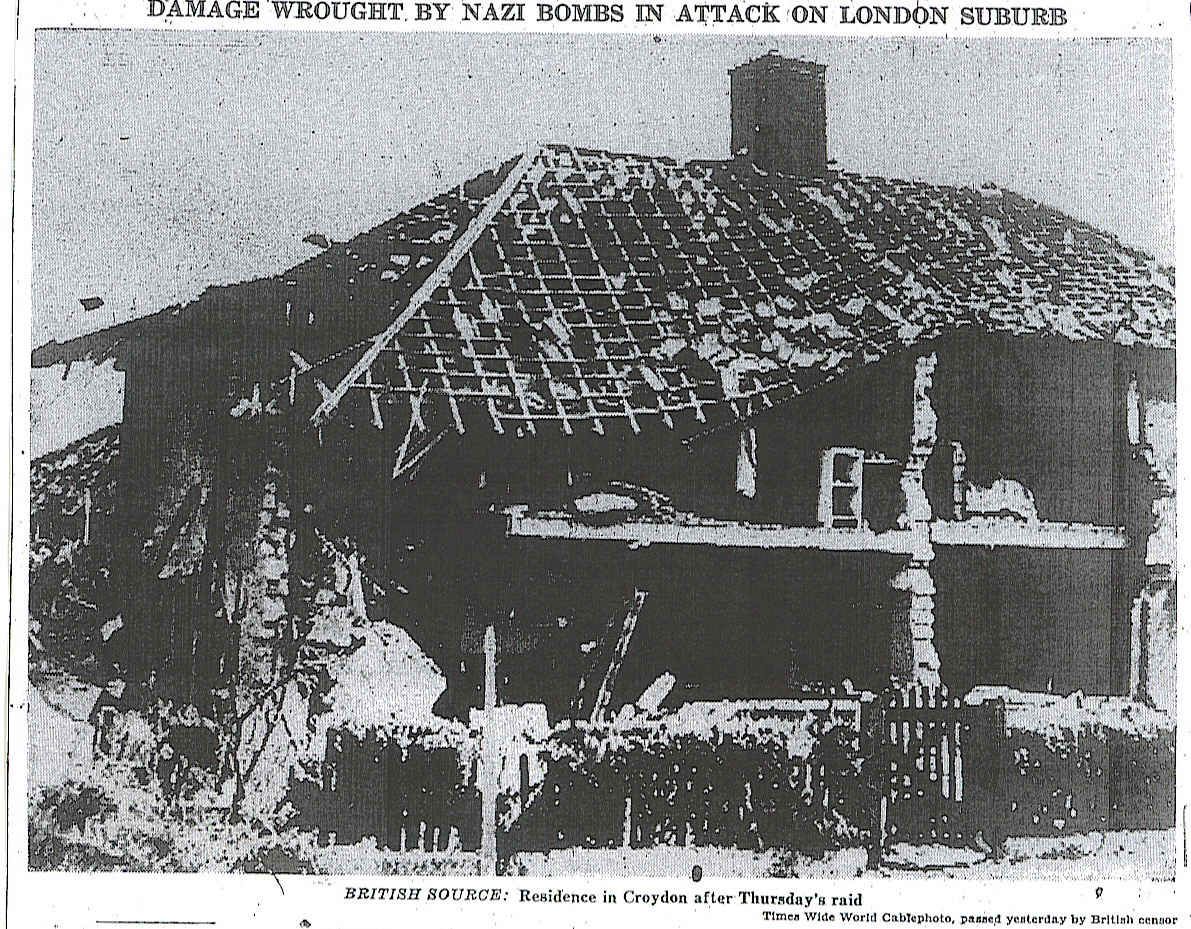
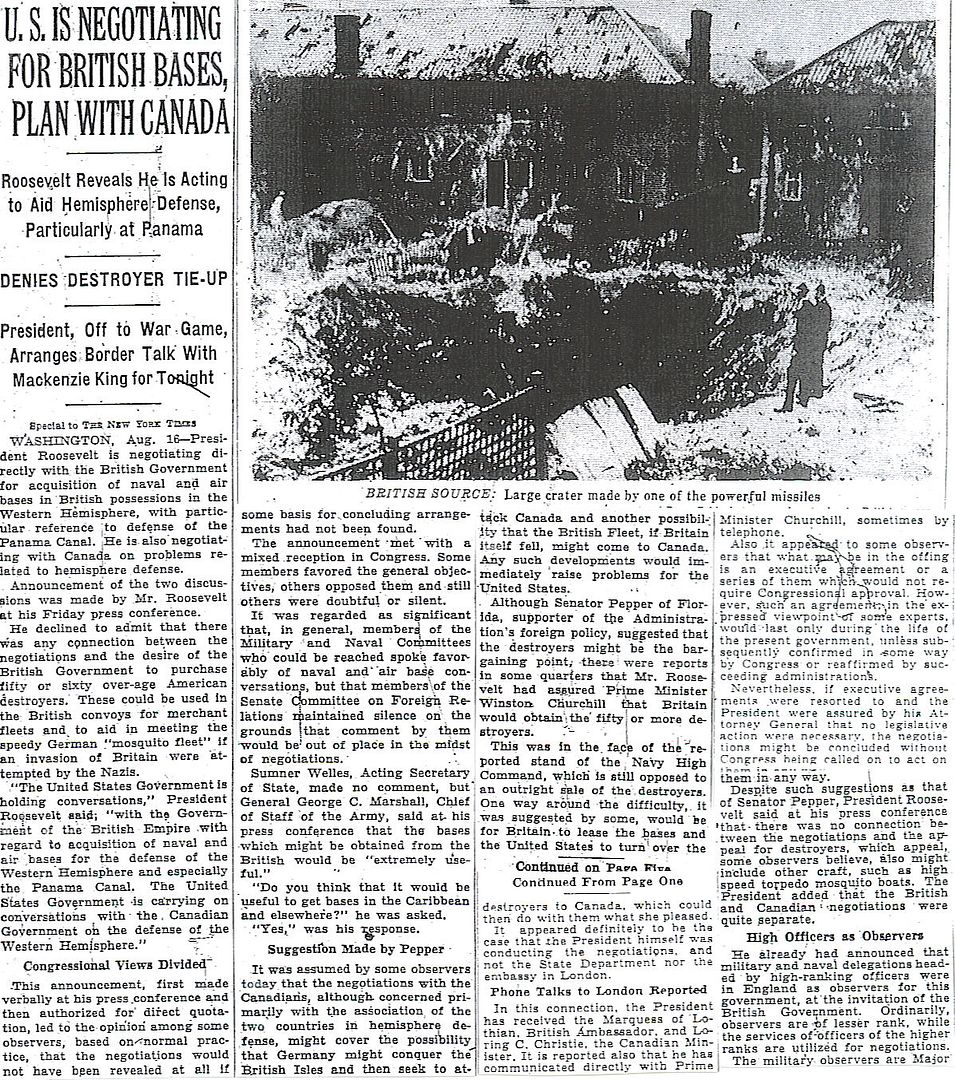
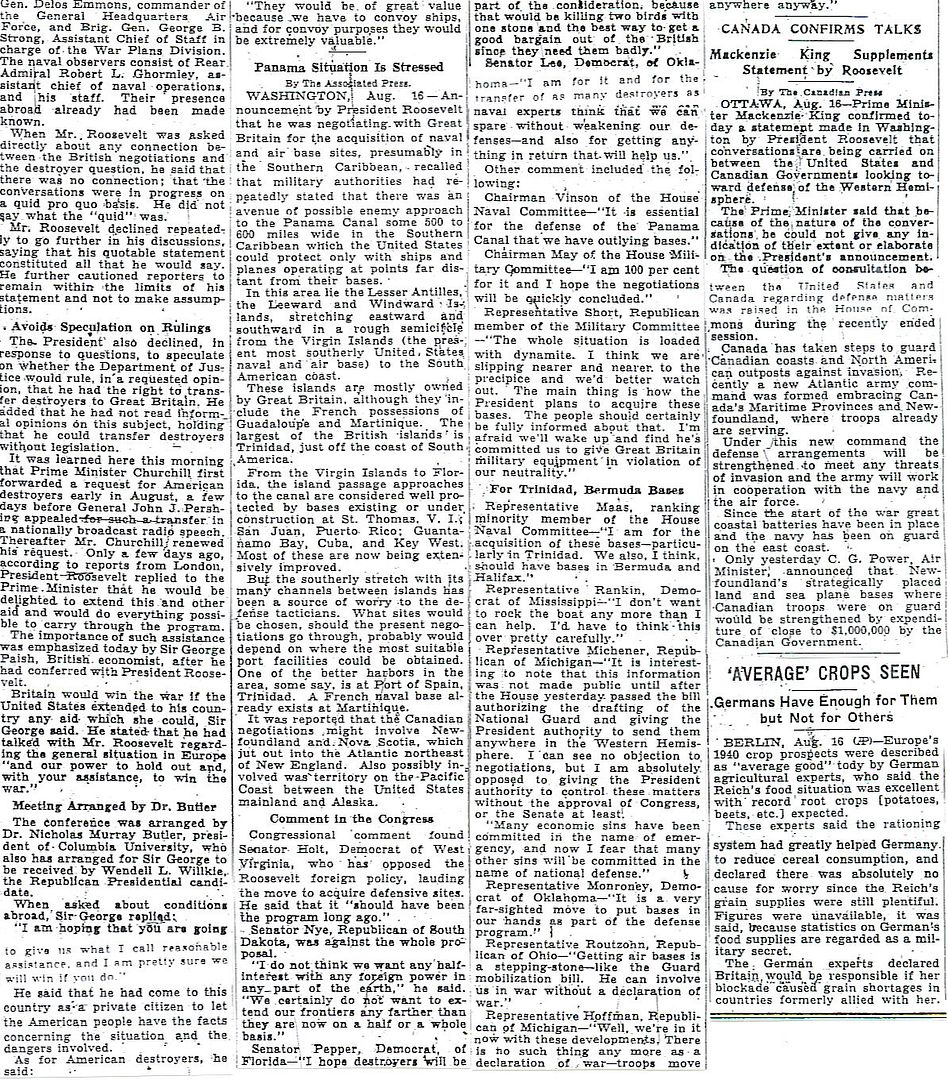
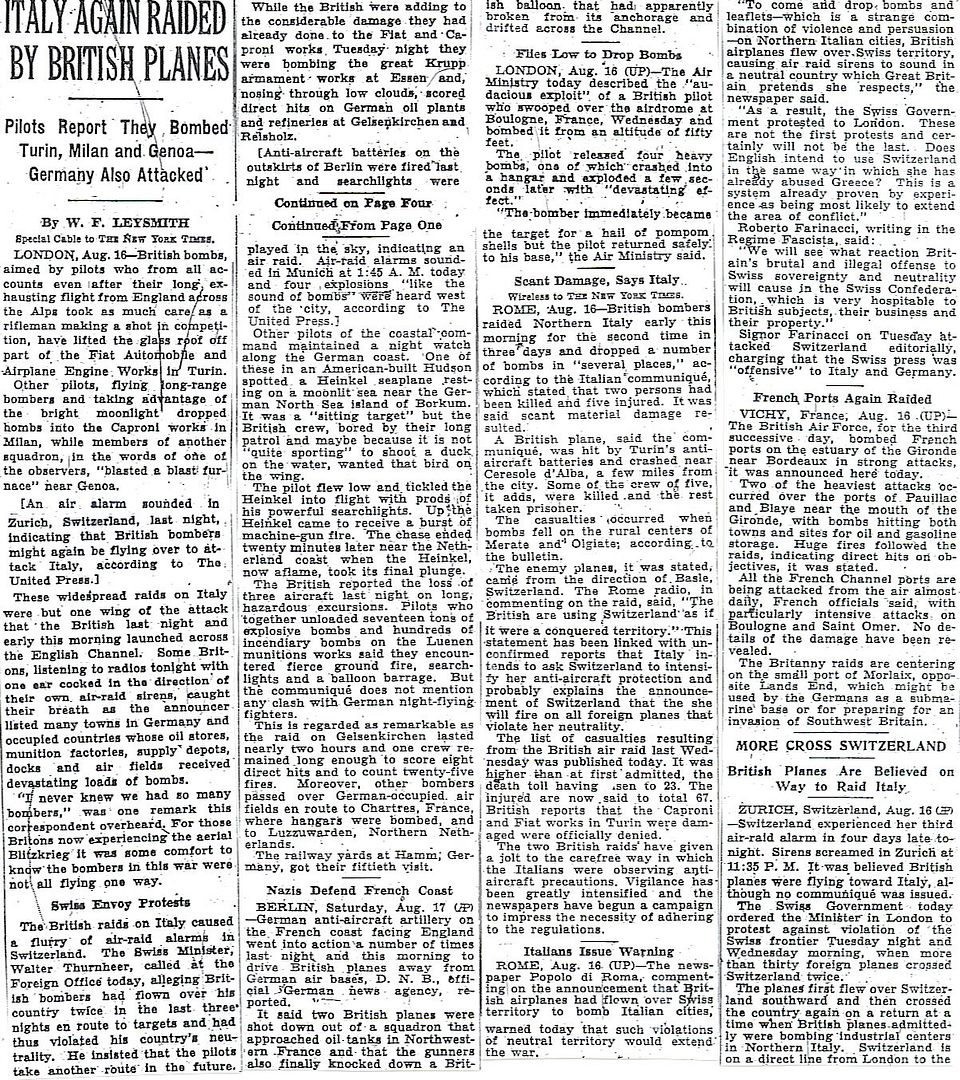

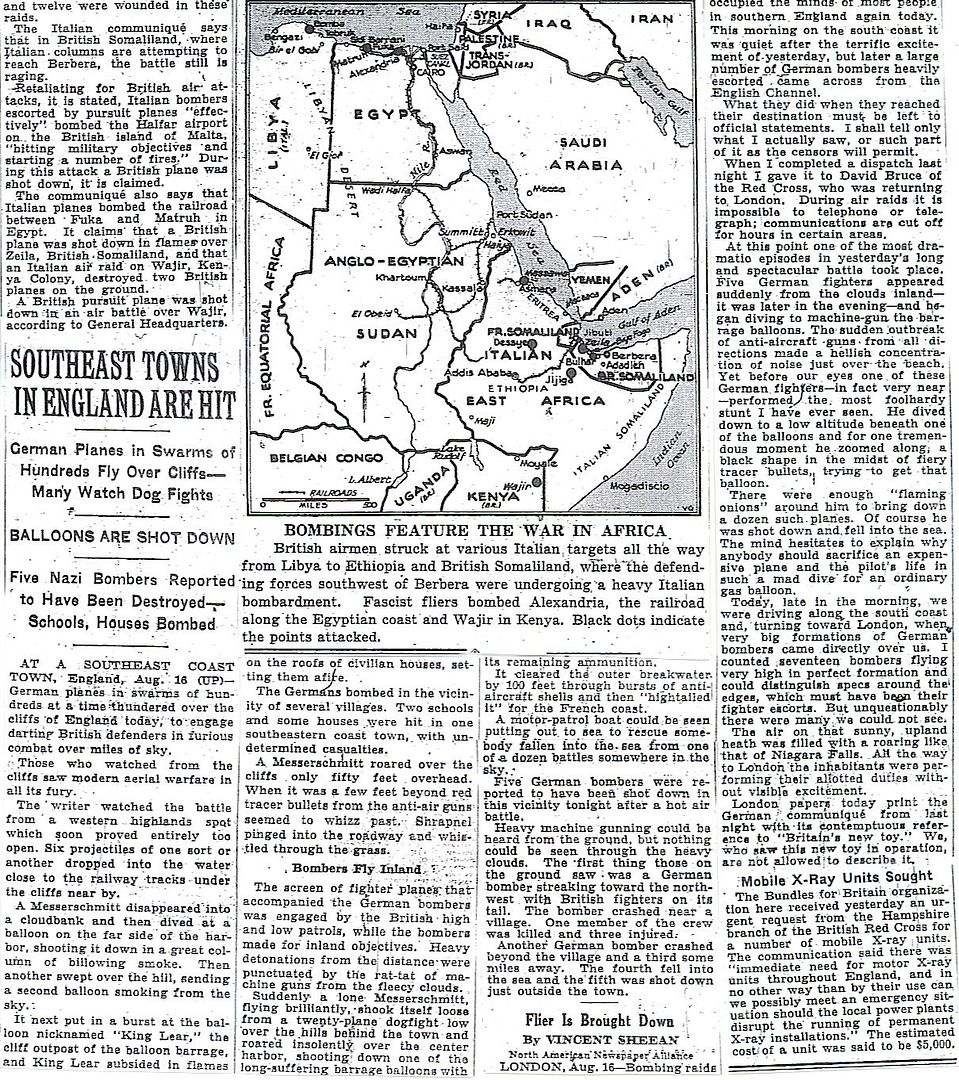
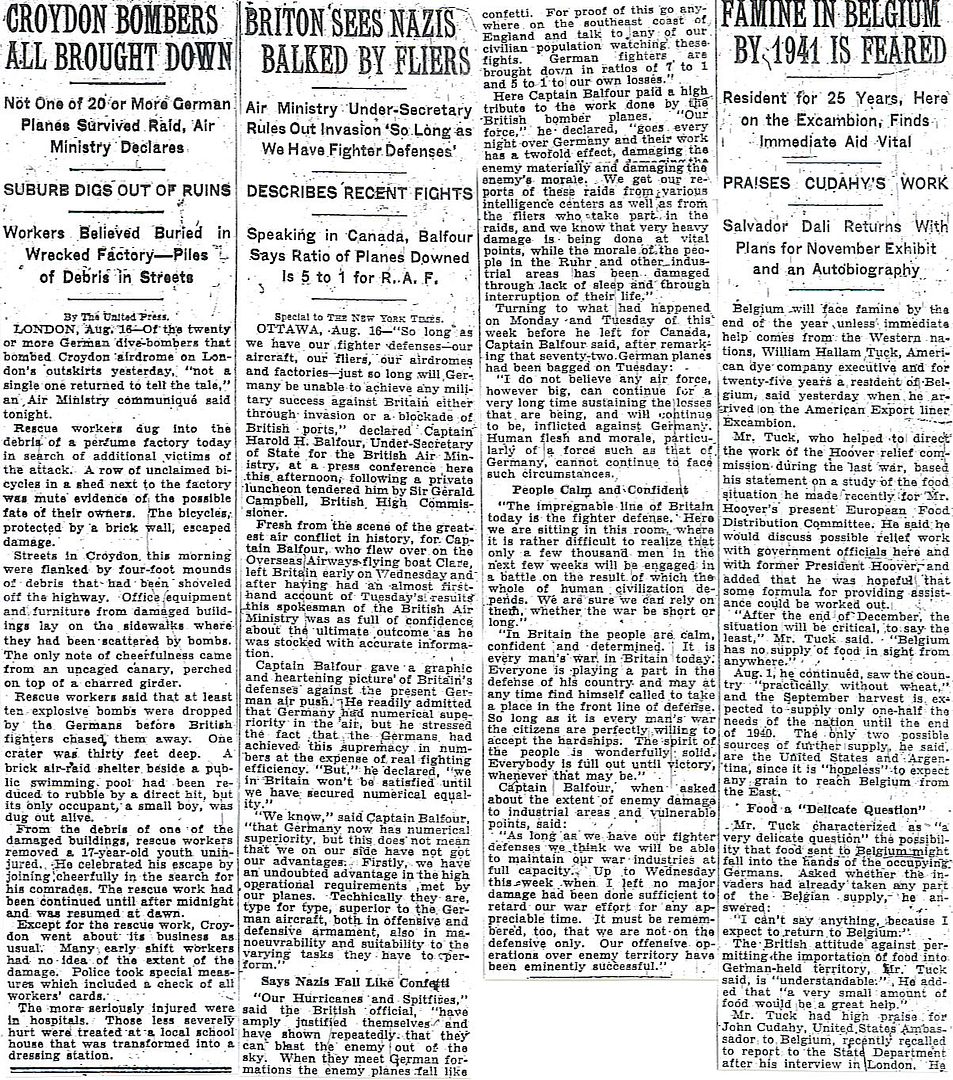
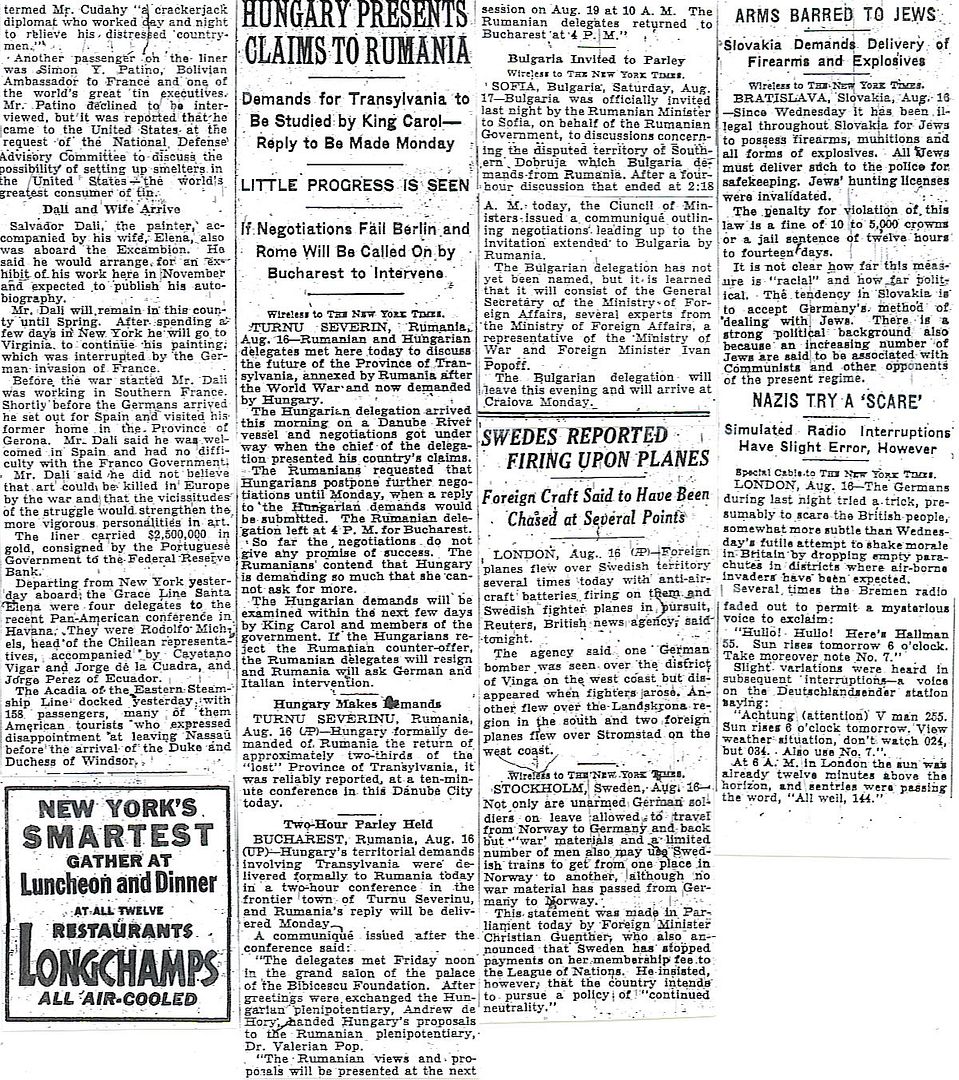
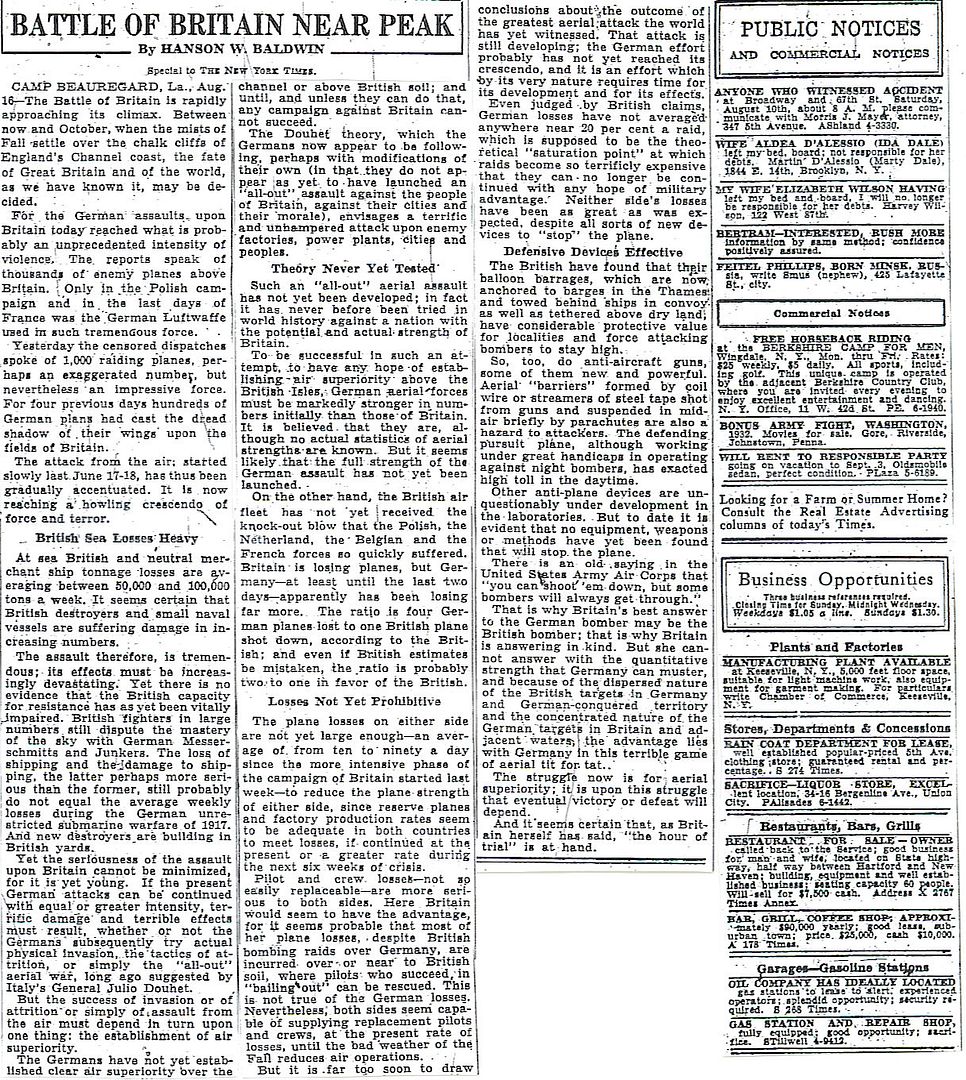
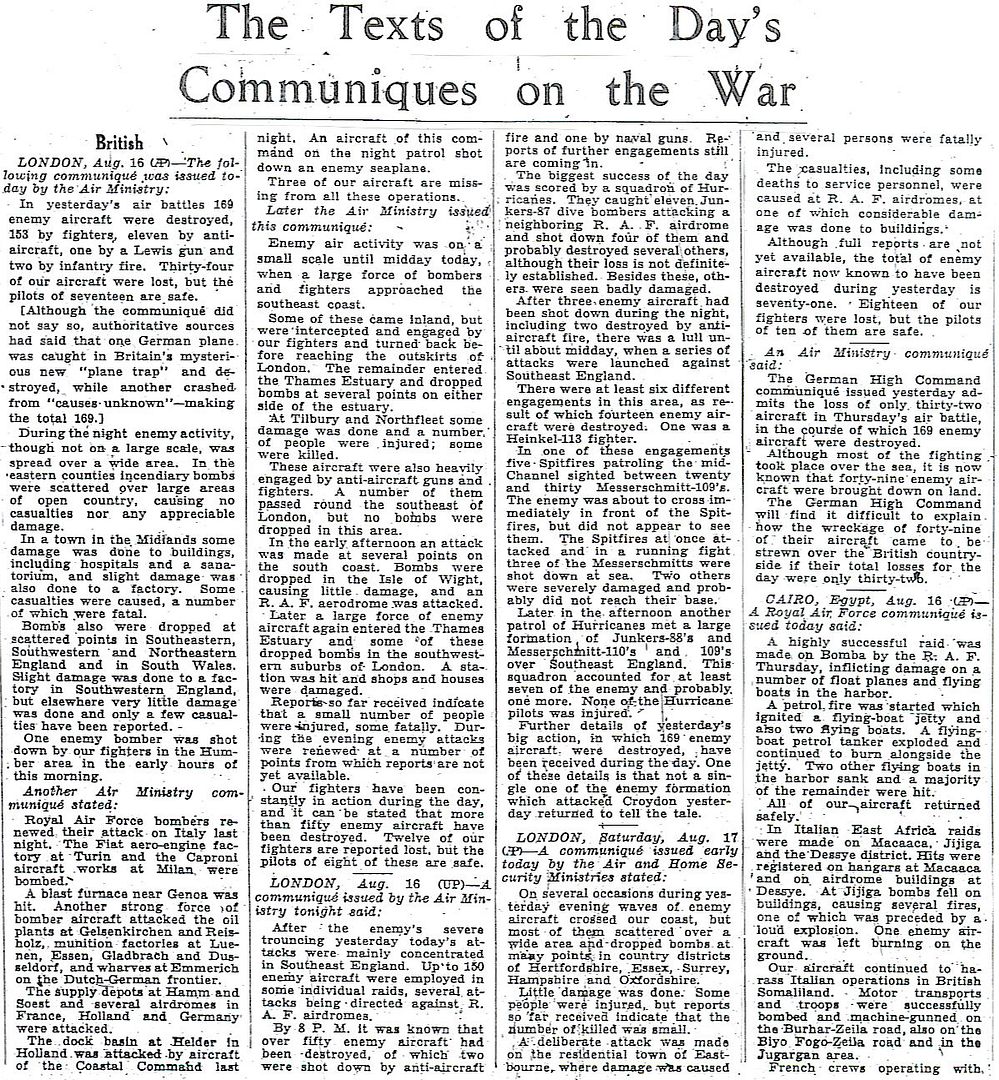

Plus a special guest map from Michael Korda’s, “With Wings Like Eagles,” showing the air defenses of England and Wales, August 1940.
* Baldwin wins high marks for this effort. I don’t see much in his analysis that will be contradicted by historians with the benefit of 70-year hindsight.
http://www.onwar.com/chrono/1940/aug40/f17aug40.htm
Royal Navy bombards Italian bases
Saturday, August 17, 1940 www.onwar.com
In the Mediterranean... Admiral Cunningham leads three battleships and several other vessels of the British Mediterranean Fleet to bombard the Italian positions at Bardia and Fort Capuzzo. Air attacks on the ships are beaten off.
Over Germany... The RAF sends a raid against the armament works at Leuna. Although at this stage of the war the RAF intends to hit only military targets, it cannot achieve the necessary accuracy in night bombing.
In Greece... Following recently increased tension with Italy, the Greek armed forces are partially mobilized with a call-up in some districts. Among the provocations is the sinking of the Greek cruiser Helle by an Italian submarine.
Over Britain... There are no major German attacks even though the weather is reasonably good. In response to pleas from Dowding the Air Ministry agrees to give Fighter Command some extra pilots from other RAF branches and to shorten the training period for new pilots even though this has obvious disadvantages.
http://homepage.ntlworld.com/andrew.etherington/month/thismonth/17.htm
August 17th, 1940
UNITED KINGDOM: RAF Bomber Command: 4 Group (Whitley). Bombing - aircraft factory at Augsburg.
102 Sqn. Five aircraft. One returned early, three bombed primary and one FTR.
RAF Fighter Command: A day of reduced activity limited to single aircraft seeking coastal shipping.
Around 17:00 a photo-reconnaissance aircraft lingered at 35,000 feet over London, before another flying even higher surveyed the Thames and its Estuary.
During night attacks homes are destroyed in Aberavon, Wales. Bombs also fell south-west of Coventry and a dozen on Liverpool.
Pilot Officer R.A. Rhodes and Sgt. Gregory operating a Mersey Blue Line patrol from Ternhill in a Blenheim 1 fighter L6741 of 29 Sqn shot down a night raider which they located by the lights in its rear position. Killed in the encounter was KG 53’s Gruppenkommandeur.
Churchill spends the afternoon watching the progress of the battle in the “ops room” of No. 11 Group at Uxbridge, near London. He could hardly contain his excitement as he followed the progress of the battles. The gallantry of the RAF against constant attack from the Luftwaffe made a deep impression on him. Later, driving home, he said: “Don’t speak to me; I have never been so moved.”
London: The Reuters News Agency reported:
For the first time in the war German aircraft have bombed the suburbs of London, but the actual city of London neither saw enemy aircraft, nor heard the roar of their engines nor of anti-aircraft fire. Londoners are going quietly about their work. In the evening the usual crowds are to be seen outside theatre and cinemas, and the parks are packed with strollers who will be very surprised to read in the morning papers what the Germans say about the great air battles over London. The first German report that London’s port district had been “very badly damaged,” provoked some mirth here; while the later German reports that their planes “danced” over London, that gigantic fires were raging on both sides of the Thames, and that a curtain of smoke lay across the whole of London, gave Londoners much amusement. When the air alert was sounded for the second time in 24 hours on Friday afternoon, at an hour when there was busy traffic on the streets, the majority of passers-by entered the air-raid shelters in complete composure.
Lt Edward Womersley (1917-55), Royal Engineers, dug 17 feet to an unexploded bomb and removed a new type of fuse for which he had no instructions. (Empire Gallantry Medal)
Corvette HMS Coreopsis commissioned. Submarine HMS Utmost commissioned. (Dave Shirlaw)
GERMANY: The Luftwaffe removes Stukas from its attacking force, as they have proved too vulnerable.
Daily Keynote from the Reich Press Chief:
The Minister [of Propaganda, Goebbels] reckons that sooner or later the English will give up their present tactic of trivialising [the German air raids] and substitute a new tactic: playing the fiddle of humanitarian sentiment in order to “awaken the world’s conscience,” for which they will trot out murdered women, pregnant women, old people etc., for inspection. To meet this predictable eventuality, Herr Fritsche and Herr Bohmer [of the Ministry of Propaganda] should have material ready to hand, pictures of the children killed in Freiburg and so on ...
The German government announces a “total blockade” of the British Isles and states that all ships will be sunk without warning. (Jack McKillop)
Corvette Kreizis commissioned. (Dave Shirlaw)
GREECE: Greek reserve forces are called up in some districts. This demonstrates the recent increased tensions. The Greek cruiser Helle was sunk by an Italian submarine recently.
LIBYA: The Royal Navy Mediterranean Fleet lead by Admiral Cunningham bombards Italian positions at Bardia and Fort Capuzzo.
(Mark Horan adds): In an effort to provide air cover for the bombardment operation, HMS Eagle dispatched the three Sea Gladiators of her 813 Fight Flight to Sidi Barrani where they joined RAF Gladiator’s of 112 Squadron in flying CAP throughout the day. In the afternoon, the expected attacks by Regia Aeronautica appeared. The patrols of Gladiators broke up several attacks, with 813 Fighter Flight’s Cdr. C. L. Keighley-Peach, Lt. L. K. Keith, and Lt. A. N. Young claiming two of 8 claims overall.
Tragically, 11 days later Young would be killed as killed when his 824 Squadron Swordfish crashed at Dekheila. The Mediterranean fleet sustained no damage.
Meanwhile, with Commonwealth’s recent gains in Libya, the Royal Navy begins laying plans to send several of HMS Eagle’s Swordfish aircraft to the Bardia area to operate against Italian supply lanes in the Gulf of Bomba.
CANADA: Corvette HMCS Cobalt launched Port Arthur, Ontario. (Dave Shirlaw)
http://worldwar2daybyday.blogspot.com/
Day 352 August 17, 1940
Battle of Britain Day 39. Despite perfect flying weather with little wind and cloudless skies, there are only a few German reconnaissance flights. RAF takes the opportunity to rest pilots and make repairs to aircraft, airstrips and radar stations damaged in the recent bombing. 1 German aircraft is shot down by anti-aircraft fire at Southampton. Overnight, there is bombing of the East coast and cities in the Midlands (Coventry, Liverpool, Birmingham, Wolverhampton and Chester) and one small bombing raid on London. Another German aircraft is shot down by a Blenheim. RAF bombs the armament works at Leuna, near Leipzig, Germany. No RAF aircraft are lost.
British Somaliland, East Africa. British troops are evacuated from Berbera. Italian forces are ordered not to attack during the withdrawal, hoping for a future peace settlement with Britain. British cruiser HMS Ceres, covering the evacuation, shells an Italian column advancing along the coast 40 miles West of Berbera at Bulhar. British casualties in the defense of Somaliland are 38 killed, 102 wounded and 120 captured (in contrast, Italians have 465 killed, 1530 wounded). Churchill believes Somaliland has been given up without a fight. Commander-in-Chief Middle East, General Wavell, replies that “A bloody butcher’s bill is not the sign of a good tactician”, driving Churchill into a rage. Amazingly, both Wavell and Major-General Godwin-Austen (responsible for defending British Somaliland) are not removed from command.
North Africa. Royal Navy Mediterranean Fleet sails from Alexandria, Egypt, to bombard the Libyan port of Bardia. At 7 AM, battleships HMS Warspite, Malaya & Ramillies and cruiser HMS Kent, supported by 12 destroyers, shell Bardia and Italian troop concentrations 12 miles South at Fort Capuzzo. Light Italian coastal batteries do not have the range to reach the British warships.
I am going down to enlist in the morning. Those nazi bastards.
Thanks for the postings. Terrific stuff.
Amazing!
You are a real treasure trove of just so much important information.
I had always concentrated my learned perspective on the history of U.S. pre 1880’s and really enjoy your work.
Do you have anything on the Japanese international conflicts, with the U.S. from about 1930 through Post war and USJMC management. Might even be nice to read about Tawain.
I suppose it would be interesting to read about the friction between Japan and the U.S., which started somewhere in the 20’s but, it would be so interesting to learn about the time between the 30’s and that day of infamy.
Thank you so much for your work.
Really appreciate it.
Date: 17th August 1940

Enemy action by day
Apart from a few isolated reconnaissance flights on the South and East Coasts, and over one or two aerodromes, there has been little enemy activity over Great Britain today.
East Coast
Reconnaissance flights were plotted from Calais to North Foreland and along the coast to Yarmouth over convoys. At 1305 hours, one hostile raid crossed the North Sea 30 miles off the East Anglian Coast within sight of two convoys, but did not attack. At 1508 hours, one hostile reconnaissance was plotted near a convoy, but faded going south to Dunkerque. At about 1700 hours, a raid of 1+ aircraft appeared in the Thames Estuary where anti-aircraft guns opened fire. This raid entered the Central London area, and bombs were reported near Hornchurch. At 1820 hours, a hostile reconnaissance was reported over the Thames at 35,000 feet.
South Coast
In the very early morning and enemy aircraft was shot down by anti-aircraft fire at Southampton.
After 0900 hours, reconnaissance flights were plotted along the coast to south of Newhaven and to Bembridge, Isle of Wight. At 1204 hours, 3+ aircraft appeared flying north towards Portsmouth, but turned away on sighting our fighters. At about 1230 hours, six enemy aircraft appeared flying from Shoreham towards Selsey Bill. Fighters were despatched but no interception was reported.
Between 1300 and 1600 hours, about 3 small raids of 1 aircraft made reconnaissance flights between Thorney Island and Isle of Wight. One raid of 8+ aircraft flew from Cherbourg towards Isle of Wight but turned back on sighting our fighters.
Between 1700 and 1800 hours, four high-level reconnaissance flights were plotted near the coast between North Foreland and Selsey Bill.
West Coast
One raid was plotted well out to see in Cardigan Bay, and a ship is reported to have been sunk near Strumble Head. A raid was plotted in mid-Wales moving east and returning. It is reported that leaflets were dropped in the Welshpool area.
By night
Enemy activity was slight during the early part but increased later. At about 2100 hours, a raid of 3+ flew north to Isle of Sheppey. Between 2100 and 2300 hours, a few single aircraft were active off the Norfolk Coast. At about 2130 hours, a single aircraft flew up the Thames Estuary and out across the Essex Coast near Southend.
Between 2300 and 0100 hours, there was rather more activity in the Western region. About 7 raids went north to Wales and the Midlands and some penetrated to Birmingham, Wolverhampton and Chester. Between 2330 and 0030 hours, raids were plotted near Lyme Bay and between Beachy Head and Hastings. At 0042 hours, a raid over the Mersey area flew to Crosby, Oswestry, Birmingham, Nottingham and then south to Poole, crossing the coast at 0253 hours. At 0115 hours, a raid penetrated to Reading, Windsor and Henley. At 0244 hours, a raid was plotted near Hucknall then to Newark and Lincoln and out to sea where it was shot down by a Blenheim.

________________________________________
Statistics
Fighter Command Serviceable Aircraft as at 0900 hours, 17th August 1940
Casualties:
| Enemy Losses | ||
|---|---|---|
| By Fighters | ||
| Destroyed | Probable | Damaged |
| 1unknown | ||
| 1 | ||
| By Anti-Aircraft | ||
| Destroyed | Probable | Damaged |
| 1 unknown | ||
| 1 |
Patrols:
Balloons:
Aerodromes:
Organisation:
Air Intelligence Reports
Home Security Reports
If it hapened prior to August 1940 it probably won't show up here except as background in a reply or perhaps in a Sunday in-depth news analysis piece. We generally go where the front page stories lead. That means the Battle of Britain trading headlines with the campaigns leading to the November general election for a while.
I suppose it would be interesting to read about the friction between Japan and the U.S., which started somewhere in the 20’s but, it would be so interesting to learn about the time between the 30’s and that day of infamy.
I keep an eye out for items on Japan-U.S. relations and post them frequently. They occasionally generate lively discussion, mostly centering on FDR and his machinations. As we approach 1941 and tension begins to build between the two nations I have no doubt there will be more Japan related headlines.
Not tomorrow, I'm afraid. There is a Somaliland headline in the near future but it is not Sunday. Wendell Willkie wins top billing (if nothing else).
Found it. The camel express arrives with news from Africa in time to make the deadline for Tuesday, August 20. I look forward to seeing the Movietone presentation later today.
London, you ain’t seen nothing yet.
I might be a couple days early here. I probably would have been better to post this on the 19th. It’s pretty scattered there as far as the action goes.
I expect they will get more intense from about this October on.
Disclaimer: Opinions posted on Free Republic are those of the individual posters and do not necessarily represent the opinion of Free Republic or its management. All materials posted herein are protected by copyright law and the exemption for fair use of copyrighted works.